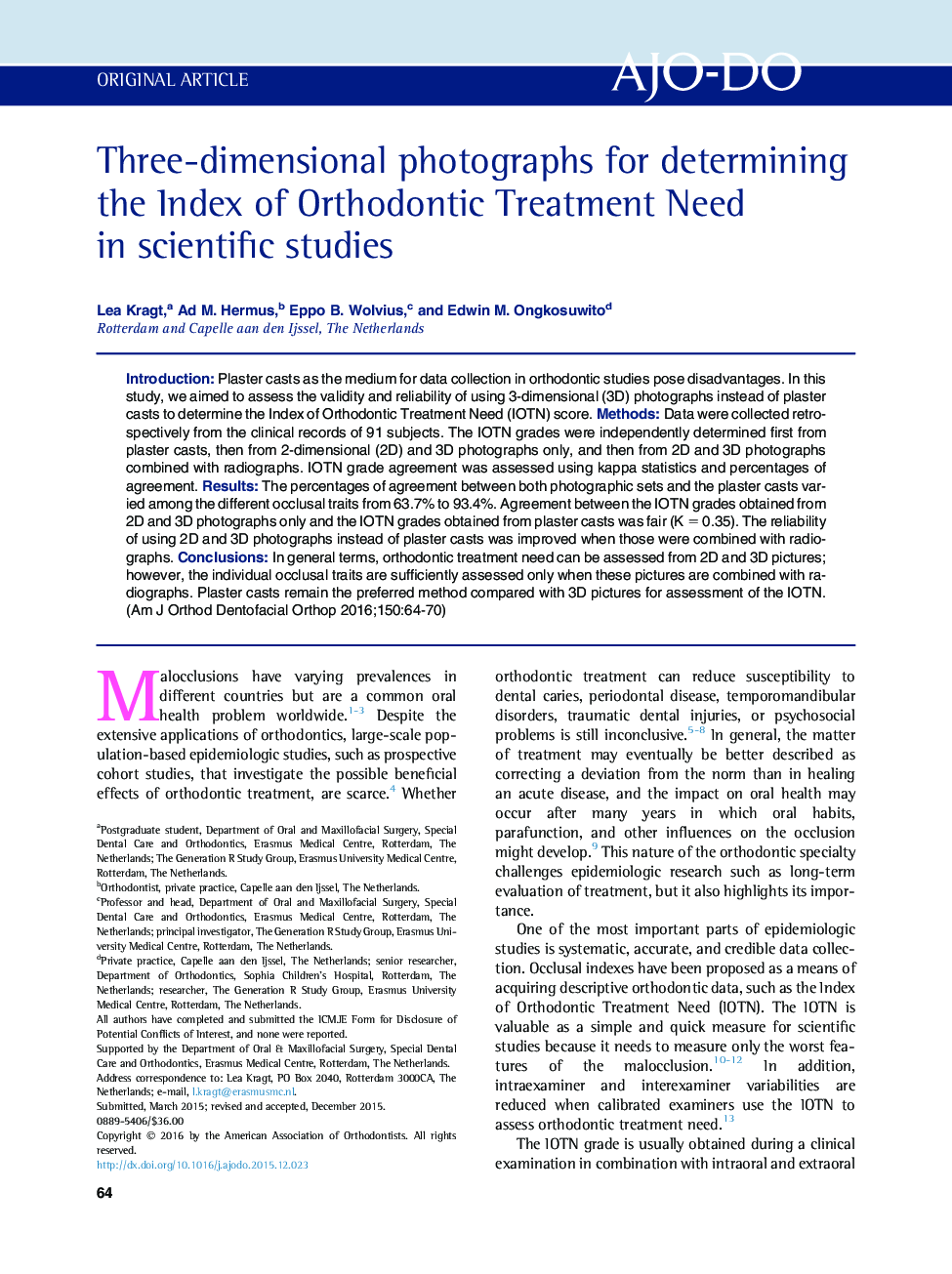| Article ID | Journal | Published Year | Pages | File Type |
|---|---|---|---|---|
| 3115373 | American Journal of Orthodontics and Dentofacial Orthopedics | 2016 | 7 Pages |
•We evaluated orthodontic need based solely on photographic records.•High-precision 3-dimensional (3D) surface imaging was used.•Orthodontic need was determined sensitively and specifically by 2D and 3D pictures.•This enables orthodontists to meet higher scientific demands of validity and reliability.
IntroductionPlaster casts as the medium for data collection in orthodontic studies pose disadvantages. In this study, we aimed to assess the validity and reliability of using 3-dimensional (3D) photographs instead of plaster casts to determine the Index of Orthodontic Treatment Need (IOTN) score.MethodsData were collected retrospectively from the clinical records of 91 subjects. The IOTN grades were independently determined first from plaster casts, then from 2-dimensional (2D) and 3D photographs only, and then from 2D and 3D photographs combined with radiographs. IOTN grade agreement was assessed using kappa statistics and percentages of agreement.ResultsThe percentages of agreement between both photographic sets and the plaster casts varied among the different occlusal traits from 63.7% to 93.4%. Agreement between the IOTN grades obtained from 2D and 3D photographs only and the IOTN grades obtained from plaster casts was fair (K = 0.35). The reliability of using 2D and 3D photographs instead of plaster casts was improved when those were combined with radiographs.ConclusionsIn general terms, orthodontic treatment need can be assessed from 2D and 3D pictures; however, the individual occlusal traits are sufficiently assessed only when these pictures are combined with radiographs. Plaster casts remain the preferred method compared with 3D pictures for assessment of the IOTN.
